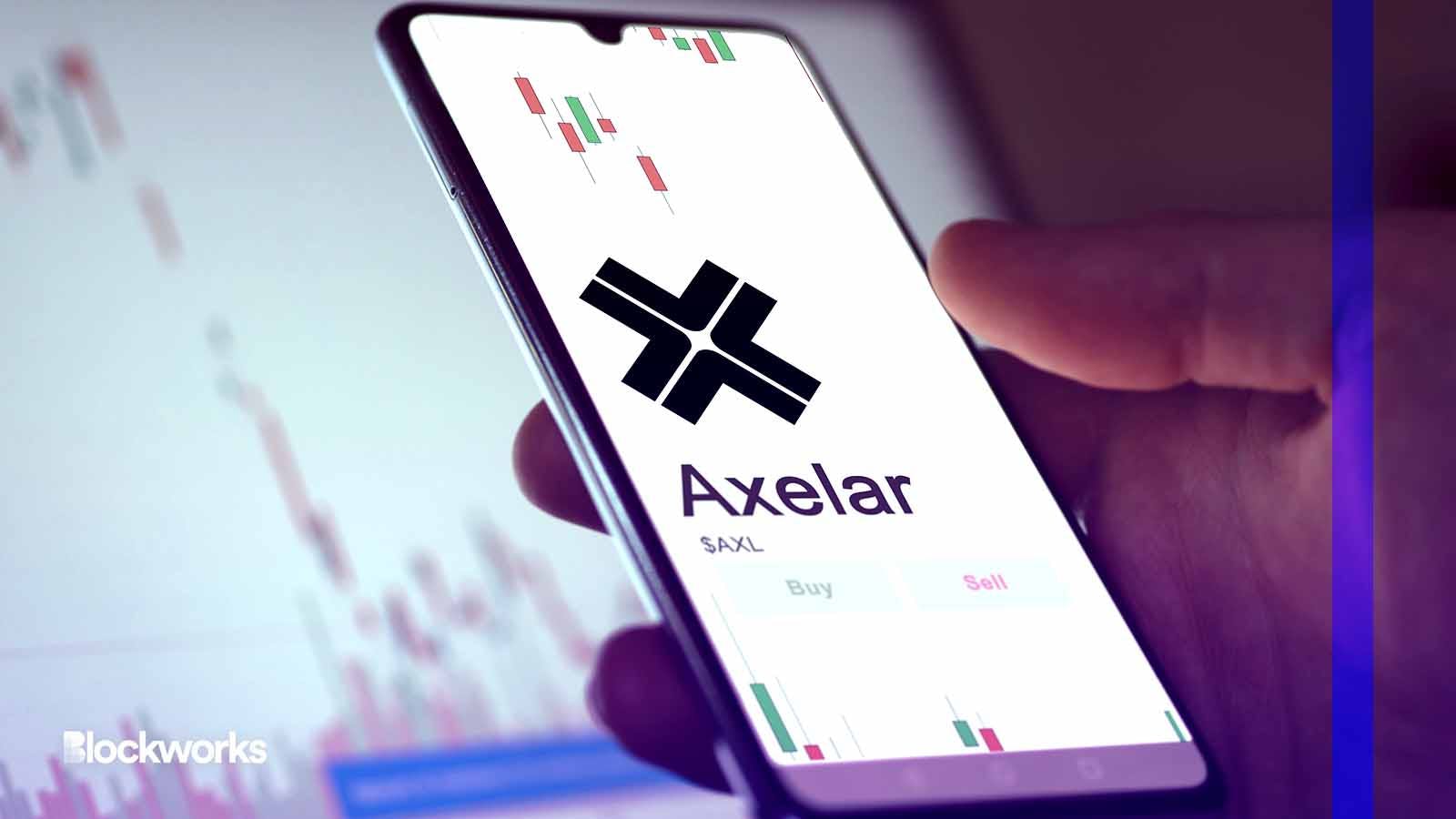Axelar prepares tokenomic overhaul for AXL
The proposal wants to make AXL deflationary and introduce necessary infrastructure to simplify the blockchain integration process

Maurice NORBERT/Shutterstock modified by Blockworks
Cross-chain communication platform Axelar is looking to revamp the tokenomics of its native token AXL and simplify the blockchain integration process.
According to Axelarscan, since its genesis the network has processed over $6 billion in cross-chain transactions. It currently has a total value locked (TVL) of $95.3 million and a market cap of $143.3 million, as shown on DeFiLlama.
As it currently stands, Axelar’s native token (AXL) is inflationary. Its existing inflationary design is intentional, as it incentivises validators to offer connections to external chains. But the Axelar Foundation, the team behind the Axelar network, has proposed to modify the inflation parameters and introduce a gas burning mechanism.
In an interview with Blockworks, Axelar Foundation Chairman Georgios Vlachos noted that existing inflation parameters add rewards for each connected external chain that does not have light clients.
“We cannot support hundreds or thousands of chains in this model without inflating the network substantially. So in the short-term, these parameters should be reduced to allow us to support more chains, while the community is working on launching the Virtual Machine and new connectivity models that do not have these inflationary properties,” Vlachos said.
The culminated total inflation rate of Axelar is currently around 11.5%, with each externally verified chain adding an inflation rate of 0.75%. The proposal suggests lowering the inflation to 0.3% for each external chain, which will reduce total inflation to around 5.2%. Then, with the addition of five other chains which will join the network, the new model would bring inflation up to around 6.7%.
Addressing the feedback from community members that inflation should be gradually adjusted, Valchos notes that it is relatively straightforward to submit governance proposals that will gradually adjust the inflation if the community believes that it is the best approach.
Beyond revamping its tokenomics, the Axelar Foundation is also hoping to streamline the process of integrating layer-2s onto its network.
Read more: Microsoft, Axelar team up to ‘further advance’ adoption of blockchain technologies
In the medium term, this means transitioning to using the Axelar Virtual Machine (AVM) and the Interchain Amplifier — a set of smart contracts built on top of the AVM, both which are currently under development.
The Interchain Amplifier will be able to automate new-chain connections across EVM and other consensus mechanisms, said Sergey Gorbunov, CEO of Axelar Inc.
“The AVM is a combination of Axelar network’s interoperability with CosmWasm smart-contract logic — enabling what we like to think of as a programmable interoperability layer,” Gorbunov said.
Programmability at the interoperability layer will enable Axelar to automate integrations with thousands of different chains and also explore new interoperability use cases that will enable developers to quickly deploy and manage multi-chain applications from a single environment, Gorbunov explains.
In the long term, the Axelar Foundation is hoping to employ light clients.
Light clients in blockchains are nodes that run a “light” client software that proves blockchain data from providers rather than keeping it and verifying it on the blockchain itself. These light client connections would be supported by relayers, instead of external validators.
Read more: Bitcoin’s first zero-knowledge light client seeks to drive innovation
“Light-client connections would mean a new EVM chain could get full-service interoperability via Axelar network without requiring Axelar network validators to run a node on the new chain,” Gorbunov said. “This reduces onboarding overhead substantially, and can scale to thousands of chains.”
If the proposal is approved by community governance, the token economics proposal will be implemented before the end of year. Meanwhile, the Interchain Amplifier and any other new-chain activities will not be until 2024.
Get the news in your inbox. Explore Blockworks newsletters:
- The Breakdown: Decoding crypto and the markets. Daily.
- 0xResearch: Alpha in your inbox. Think like an analyst.






